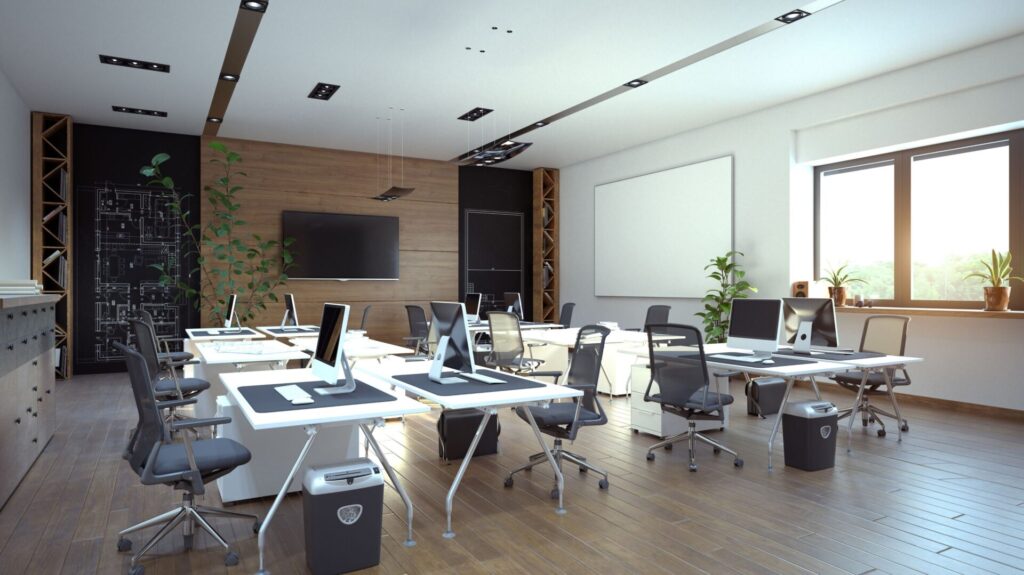Reducing CO2 emissions through solar shading: a winning strategy
One of the most complex challenges for companies in the current context concerns their ability to build a sustainable growth model not only economically but also environmentally.
Table of Contents
In this regard, there are many actions to reduce one’s carbon footprint, starting with the choice of energy supply, where the keywords are green and renewable.
In this scenario, one element worth considering is the energy efficiency of industrial and commercial buildings. Passive solar shading solutions can not only revolutionize indoor comfort but also measurably contribute to reducing CO2 emissions and improving the energy performance of buildings.
In this article, we explore how passive shading interventions can significantly reduce a company’s carbon footprint.
Decarbonization goals and the role of construction
The European Union has set the goal of achieving climate neutrality by 2050. This path includes several intermediate goals: one is to reduce greenhouse gas emissions by 55% by 2030, another is to increase the use of renewable energy to 27% by the same year.
The directives do not stop there; they also include other factors: a gradually increasing annual energy saving target, the growth of markets for renewable sources, and in particular, the development of a renewable hydrogen market.
Productive activities, service providers, and companies in general are called to make a special contribution, since they are the largest contributors to CO2 emissions compared to private individuals.
To promote environmentally sustainable growth, the circular economy proposes a virtuous model, as well as more conscious waste and residue management.
By implementing this type of solution, companies can build a less environmentally impactful paradigm, but if construction and buildings are not appropriately addressed, they will continue to hinder sustainability.
The construction of most industrial and commercial buildings in the national territory dates back to a time when the environment was certainly not a priority. Today, these buildings require improved energy efficiency, which is often mistakenly seen as the need for invasive interventions on the structure and systems.
Passive solar shading solutions, on the other hand, using modern and efficient technologies, act on the building envelope and reduce its overall carbon dioxide emissions.
The impact of passive solutions on environmental sustainability
When we talk about passive solar shading, we refer to advanced devices designed to control solar radiation entering buildings through opaque surfaces (such as roofs) or transparent ones (such as windows, glass façades, and skylights).
These are not systems that operate by consuming energy, which is why they are called passive technologies.
Passive solar shading works by taking advantage of its position and, through specific materials and technical characteristics, reflects solar radiation while still allowing light to pass through.
There are various types of products that operate this way: solar control films are installed on transparent surfaces, while heat-reflective paints are used on opaque surfaces or skylights.
The role of solar shading in reducing energy demand
The greatest impact of solar radiation on windows and roofs is indoor overheating. Enclosed spaces experience a greenhouse effect, causing the air to heat up to extreme levels during the warmer months, pushing companies to rely—often unsuccessfully—on cooling and air conditioning systems.
This practice results in a significant increase in electricity consumption and thus in CO2 emissions.
The role of shading devices, acting at the source of the problem by limiting the amount of solar radiation that enters, allows indoor temperature control systems to work less, thereby reducing energy use.
When the starting temperature is lower, it becomes easier for these systems to reach the desired temperature. As a result, they are not only active for a shorter time, but they also consume less energy since the required effort is reduced.

Sustainability as a strategic value
Environmental impact is becoming a top priority for companies seeking to create value today. An investment in solar shading is a responsible action that delivers tangible benefits immediately.
These types of choices, as mentioned, align with regulatory compliance and, by reducing energy expenses, prove extremely cost-effective.
A key factor in this respect is the strategic leverage by which the company can communicate a clear message of responsibility and environmental commitment to all stakeholders.
Non-invasive interventions with high impact
We are used to thinking that the most effective solutions require major interventions on a building’s structure. Solar control films and heat-reflective paints prove that surprising results can be achieved with a non-invasive approach.
Moreover, installing these types of devices does not disrupt productivity or activities inside the building, and therefore does not represent a cost for companies in terms of production downtime.
Serisolar has specialized in this field to provide companies with expert and qualified consulting in choosing the most suitable product.
Our technicians handle the installation, which is extremely quick and delivers instant benefits.
The impact of this kind of intervention has a positive effect on energy costs—because consumption is reduced—and at the same time improves people’s well-being, thereby boosting productivity.
Serisolar helps you improve your brand image and reputation
Our goal aligns with both legal requirements and shared social expectations: to help companies improve the energy efficiency of their premises through low-impact interventions.
Sustainability is not just a label: for Serisolar, it represents a path of growth that respects the environment, the region, and people—delivering real benefits.
Choosing passive renovation solutions gives companies the opportunity to improve ESG indicators and parameters, strengthening their reputation with suppliers and stakeholders in general.
Discover how your company can reduce CO2 emissions starting right from its headquarters and production facilities. Contact us for personalized consulting and to explore the opportunities offered by dedicated passive solar shading solutions.







